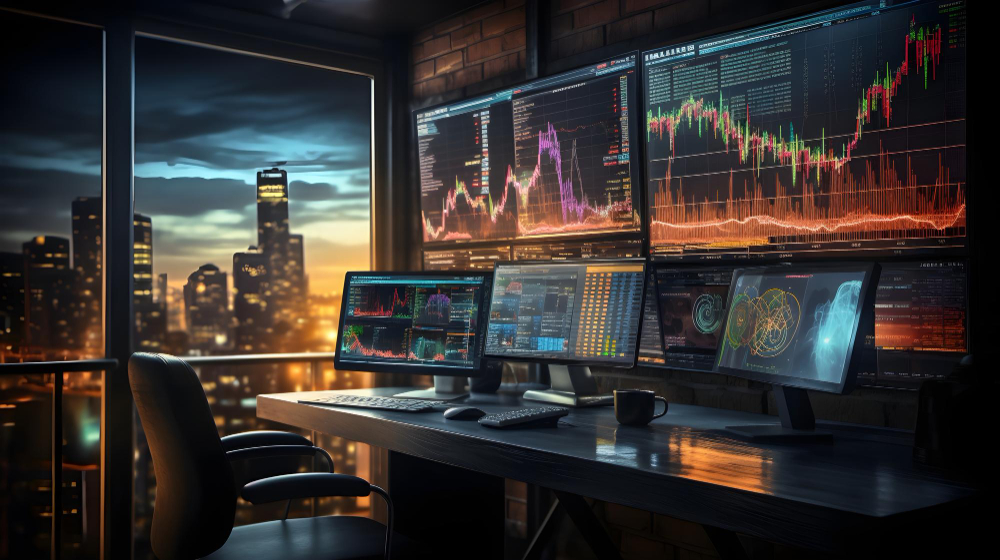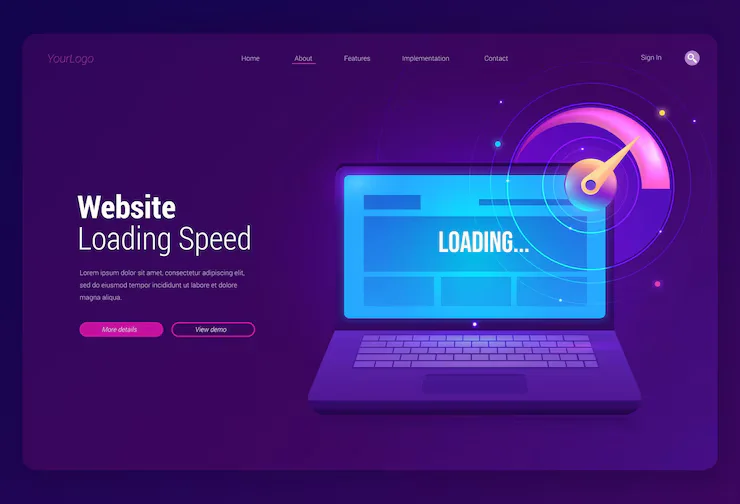
For those involved in the dynamic world of trading, a specialized trading computer is not just a luxury; it’s a necessity. These computers are tailored to handle complex trading applications, multiple data streams, and the high-speed execution of trades. Click here to view pre-built options. A robust trading computer is vital for anyone serious about trading, whether it’s stocks, forex, or cryptocurrency. It ensures that you stay ahead in the fast-paced trading environment with efficiency and reliability.
Understanding the Basics of a Trading Computer
A trading computer significantly differs from a regular PC. Its primary function is to process large volumes of data with utmost speed and efficiency, which is crucial in the fast-paced trading world. Essential components of a trading computer include a high-performance processor, ample RAM, a powerful graphics card, and multiple monitors for comprehensive market analysis. Understanding these key differences and the importance of each component is the first step in building a trading computer that can handle the intense demands of day trading, swing trading, or any other form of trading.
Essential Components of a Trading Computer
Processor (CPU)
The CPU is the backbone of a trading computer, responsible for executing trading applications and algorithms swiftly. A fast and reliable processor is crucial for real-time market analysis and trade execution. Top choices for trading CPUs are those that offer multiple cores and high clock speeds, such as Intel’s Core i7 or i9 series, or AMD’s Ryzen series. It’s essential to balance budget with performance, ensuring your CPU can handle concurrent trading applications without lag.
Graphics Card (GPU)
While not as critical as the CPU, the GPU plays a vital role in a trading computer, especially when running multiple monitors. It needs to efficiently handle real-time financial charting and data streaming across several displays. GPUs like NVIDIA’s GeForce series or AMD’s Radeon series are recommended. They offer robust performance, ensuring smooth rendering of graphical data. A high-quality GPU becomes more important as you increase the number of monitors in your setup.
Memory (RAM)
Adequate RAM is essential for smooth multitasking and handling of complex trading software. For trading computers, 16GB of RAM is often considered a good starting point, but more can be beneficial for handling multiple trading applications and extensive data sets. Fast, reliable RAM ensures your trading processes run smoothly, without any hiccups that could be costly in a trading environment.
Storage
Solid State Drives (SSD) are the preferred choice for trading computers due to their speed and reliability. They allow for quicker boot times and faster access to trading software and data. A minimum of 500GB is recommended, but 1TB or more is ideal for storing extensive historical data and multiple trading applications. HDDs can be used as secondary storage for less critical data.
Motherboard
The motherboard is the foundation of your trading computer. It should be robust and capable of supporting high-end CPUs, sufficient RAM, and multiple GPUs if needed. Features such as built-in Wi-Fi, ample USB ports, and robust build quality are important. Ensure the motherboard has enough PCIe slots for GPU and other expansion cards, and check for compatibility with your chosen CPU and RAM.
Monitors and Display Setup
Choosing Monitors
Monitors for a trading computer should have high resolution and comfortable viewing angles. Size is also a factor; larger monitors can display more information, which is crucial for analyzing complex charts and data. Look for monitors with a resolution of at least 1080p. Consider the number of monitors your GPU can support and ensure they have compatible inputs like HDMI or DisplayPort.
Multi-Monitor Setup
A multi-monitor setup allows traders to monitor various markets and charts simultaneously, a necessity for effective trading strategies. When setting up multiple monitors, ensure your GPU can handle the load. Use stands or mounts for an ergonomic setup to reduce neck strain. Configuration software can help manage multiple displays, allowing for efficient workflow and better data analysis. The right setup helps in making informed decisions quickly, a key aspect of successful trading.
Additional Hardware Considerations
Power Supply Unit (PSU)
The PSU should be reliable and provide sufficient power to all components of your trading computer. Calculate the total wattage required by your components and choose a PSU that exceeds this number for efficiency and future upgrades. Look for PSUs with 80 Plus certification for energy efficiency. A good PSU protects your investment by ensuring stable power delivery and reducing the risk of component damage.
Cooling System
Efficient cooling is essential to maintain the performance and longevity of your trading computer. Overheating can cause system crashes and hardware damage, especially during long trading sessions. Options include air cooling, which is cost-effective and easy to install, and liquid cooling, which is more efficient and quieter but more complex. Whichever system you choose, ensure it is adequate for your CPU and overall system load.
Case and Build
Select a case that provides good airflow, accessibility for upgrades, and fits your workspace. Cases with cable management options are preferable for maintaining an organized and efficient build. Additionally, consider the aesthetics if that’s important to you. Ensure the case has enough space for all components, especially if you plan to use large GPUs or multiple storage drives.
Software and Operating System
The operating system should be stable and compatible with trading software. Most traders prefer Windows due to its wide compatibility with trading platforms. Essential software includes your trading platform of choice, analytical tools, and possibly automated trading software. Security software is also crucial to protect sensitive financial data. Regular updates and backups are recommended to ensure the system runs efficiently and securely.
Building vs. Buying a Pre-Built Trading Computer
Building a custom trading computer allows for tailored specifications and potential cost savings. It requires technical knowledge but gives you control over every component. On the other hand, buying a pre-built trading computer is convenient and comes with professional support and warranties. It’s often the go-to choice for those less tech-savvy or lacking the time to build. Weighing the pros and cons, consider your expertise, budget, and specific trading needs before deciding.
Setting Up Your Trading Computer
If building your trading computer, assemble the components carefully, following manufacturer guidelines. Pay attention to static electricity, ensure proper component placement, and test the system before full operation. For software setup, install the operating system first, followed by trading software, and then any additional tools and utilities. Optimize settings for performance, including power options and visual effects. Regularly update software to keep your system running smoothly and securely.
Maintenance and Upgrades
Regular maintenance is key to the longevity of your trading computer. Clean the hardware components periodically to prevent dust buildup, which can lead to overheating. Monitor system performance and be prepared to upgrade components like RAM and storage as your trading needs evolve. Keep software up to date for security and efficiency. Being proactive with maintenance and upgrades helps ensure that your trading computer remains a reliable tool in your trading arsenal.
Conclusion
Building or choosing the right trading computer is a vital step towards a successful trading career. This guide has walked you through the essential components, from the powerful processor to the multi-monitor setup, ensuring you have the knowledge to make informed decisions. Remember, a well-built trading computer can be the difference between seamless, successful trades and frustrating technical setbacks. Whether you decide to build your own system or opt for a pre-built option, prioritize quality components and consider future upgrade paths. Investing in a robust trading computer is investing in your trading success. May your trades be profitable, and your system reliable!

How using an SIP Calculator daily helps in micro-investing

Access Any Business Platform Worldwide with iTop VPN

How Altify's Enablement Solutions Help Sales Teams Close Deals Faster

AI in Marketing Is No Longer a Buzzword — It’s the Strategy

Srinivasa Rao Challa Champions AI-Powered Financial Systems for a Smarter, Safer Economy

Why Website Speed Matters More Than Ever: The Science Behind Faster Load Times

What You Need to Know About Driver Update Online in Minutes

Add Border to Photo Instantly and Elevate Your Visuals Online








